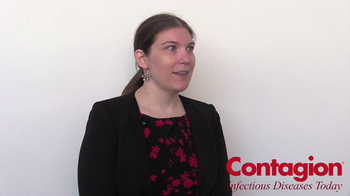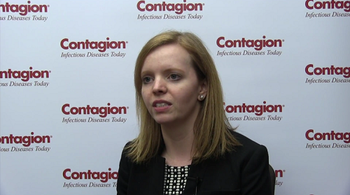
Numerous studies need to be performed to ensure adequate antimicrobial dosing, partic­ularly in the setting of renal impairment and critical illness.

Numerous studies need to be performed to ensure adequate antimicrobial dosing, partic­ularly in the setting of renal impairment and critical illness.

Fosfomycin is an attractive potential option because it does not cross-react with other antimicrobials, making it a good choice in patients with extensive drug allergies.

Relevant existing reports, though limited, demonstrated positive outcomes and suggest a promising space for pharmacy practice growth in outpatient antimicrobial stewardship.

This In the Literature piece considers a fixed-dose strategy for administering daptomycin in obese patients.

This In the Literature piece explores if we can mitigate some of the adverse reactions that are being seen in obese patients who receive vancomycin through AUC-dosing.

Warnings and concerns regarding fluoroquinolones are on the rise, but the antibiotics still play a role, albeit more limited, in the treatment of various infectious diseases.

A commentary on β-lactam combination therapy for methicillin-resistant Staphylococcus aureus bacteremia.

What can clinicians do now that increasing resistance has limited oral treatment options for outpatient cystitis?

Are there advantageous effects to use of adjunctive IVIG in the treatment of STSS with clindamycin?

The globalization of antibiotic stewardship programs is necessary in the fight against antibiotic resis­tance.

Hospital-acquired and ventilator-associated pneumonia account for 22% of all hospital-acquired infections.

Revised DHHS and IAS–USA guidelines provide new insight for physicians managing patients with HIV.

The drug presents a new option for patients at high risk of infections caused by organisms, such as carbapenem-resistant Enterobacteriaceae.

Despite the availability of highly active agents against HCV, HIV-infected patients require special considerations for drug interactions when considering treatment options.

Antimicrobial stewardship and antimicrobial susceptibility testing (AST) remain critical in the race against antimicrobial resistance.

Reducing overall antibiotic exposure is likely to have an impact on decreasing antimicrobial resistance.

Jason C. Gallagher, PharmD, addresses the undetermined importance of fixed antibiotic durations.

Candida auris—Are we prepared for another multidrug-resistant pathogen?

This training will empower pharmacists practicing in LTC facilities to develop antimicrobial stewardship programs, improve patient outcomes related to infectious diseases, and facilitate compliance with CMS requirements.

With IV drug use accounting for 60% of new infections, treatment for individuals in this population is necessary to stave off new infections.

Care continues to improve; however, drug-resistant pathogens and a lack of new agents to treat these infections remain a constant challenge.

Conan MacDougall, PharmD, explains how practitioners can adopt antibiotic stewardship interventions that will be beneficial to their specific practice settings.

Recent research shows no clinical benefits from adding azithromycin to standard treatment for adults who presented to emergency departments with acute asthma exacerbations requiring a corticosteroid course.

James S. Lewis, PharmD, FIDSA, explains why antimicrobial susceptibility testing is so important when it comes to stewardship programs.

Milena McLaughlin, PharmD, MSc, explains the main causes of antimicrobial shortages.

What can healthcare providers do to stop these infections before they start?

Contagion® Editorial Advisory Board member, Khalid Eljaaly, PharmD, BCPS, CAPP, discusses key updates in the Infectious Diseases Society of America and the American Thoracic Society recommendations.

Experts weigh in on what Congress is doing to tackle the threat of antibiotic resistance.

Emily Heil, PharmD, BCPS-AQ ID, assistant professor at the University of Maryland School of Pharmacy, explains why stewards should think outside of the box when coming up with interventions to include in an antimicrobial stewardship program.

Pharmacists play vital roles in optimizing HIV treatment outcomes in multiple ways and in all medical settings.